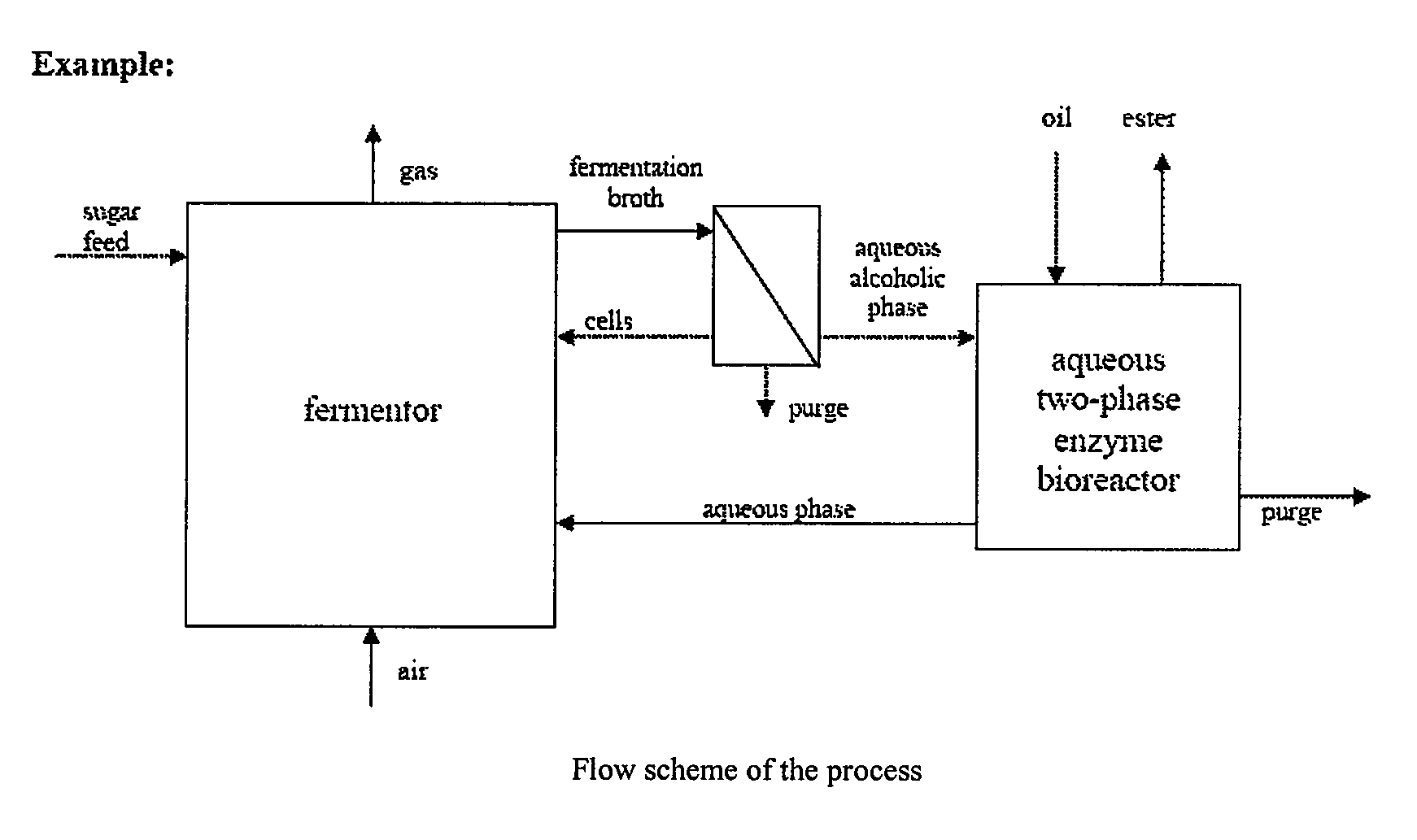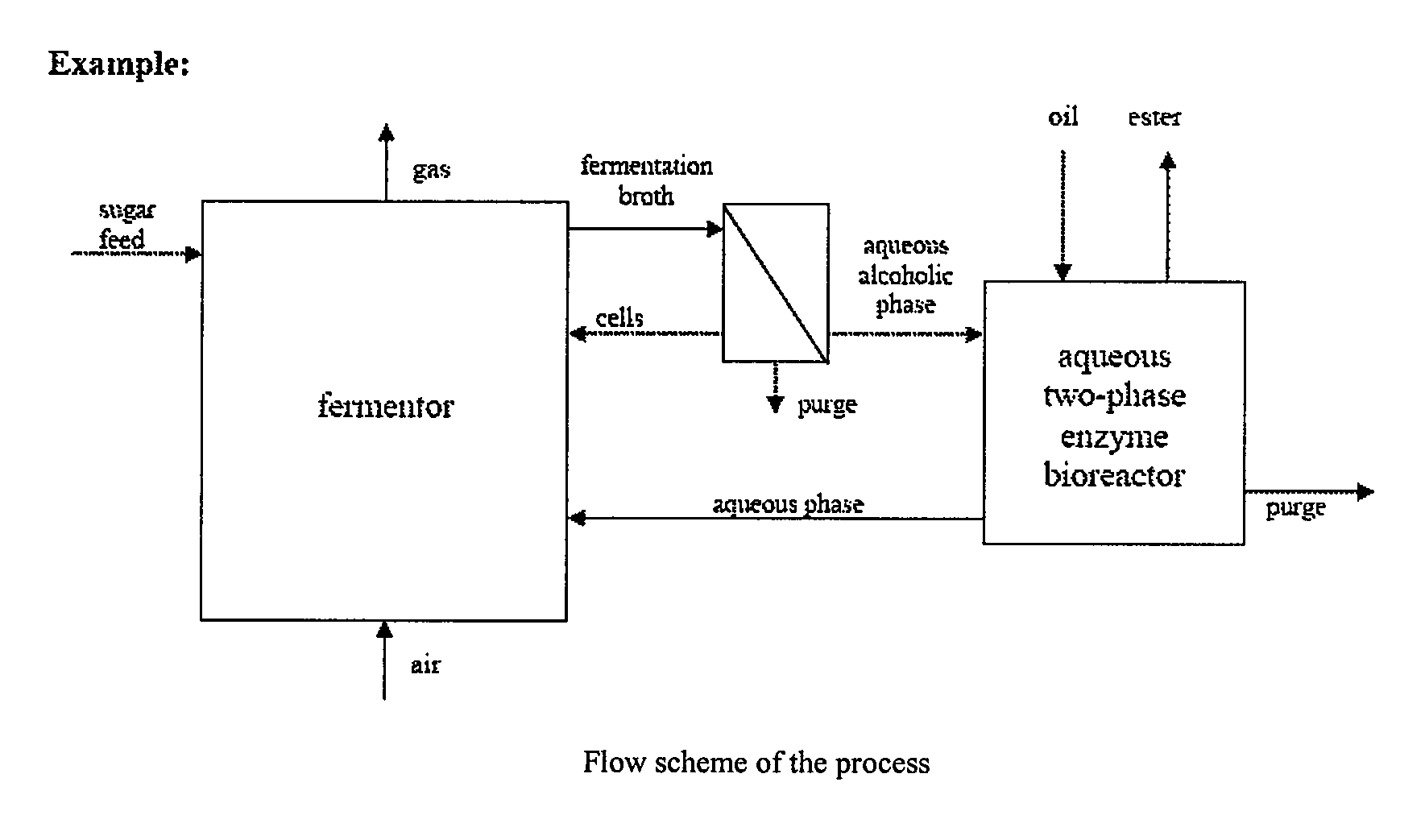Process for the production of fatty acid alkyl esters
a technology of fatty acid alkyl esters and alkyl esters, which is applied in the direction of fatty acid chemical modification, fatty oil/acid recovery from waste, fatty oil/fat refining, etc., can solve the problem that the transesterification process does not allow the use of aqueous alcohols
- Summary
- Abstract
- Description
- Claims
- Application Information
AI Technical Summary
Problems solved by technology
Method used
Image
Examples
example
[0067]Fermentation was performed as described by Alfenore et al. [Appl. Microbiol. Biotechnol. 63:537-542, 2004] in a 20 L fermentor at 30° C., pH 5 regulated with 14% v / v NH3. Aeration was set to 0.2 vvm and stirring adjusted to keep dissolved oxygen to 20% of saturation. The fermentation was performed with an exponential feeding of biotin based on the growth profile (total biotin concentration added 32 μg 1-1).
[0068]The fermentor was supplied with a sterile 700 g / L glucose feed using a peristaltic pump. Fermentation was started with a glucose concentration of 100 g 1-1 and inoculated with 1 g / L of a Saccharomyces cerevisiae strain previously grown on the same medium. Whenever residual glucose concentration was lower than 20 g 1-1, glucose feeding was carried out to restore a glucose concentration of 100 g 1-1 or 50 g 1-1 respectively when ethanol concentration was lower or higher than 90 g 1-1.
[0069]When ethanol concentration in the fermentor reached 110 g / L (i.e. after ˜15 h), th...
PUM
| Property | Measurement | Unit |
|---|---|---|
| temperature | aaaaa | aaaaa |
| concentration | aaaaa | aaaaa |
| pH | aaaaa | aaaaa |
Abstract
Description
Claims
Application Information
 Login to View More
Login to View More - R&D
- Intellectual Property
- Life Sciences
- Materials
- Tech Scout
- Unparalleled Data Quality
- Higher Quality Content
- 60% Fewer Hallucinations
Browse by: Latest US Patents, China's latest patents, Technical Efficacy Thesaurus, Application Domain, Technology Topic, Popular Technical Reports.
© 2025 PatSnap. All rights reserved.Legal|Privacy policy|Modern Slavery Act Transparency Statement|Sitemap|About US| Contact US: help@patsnap.com


